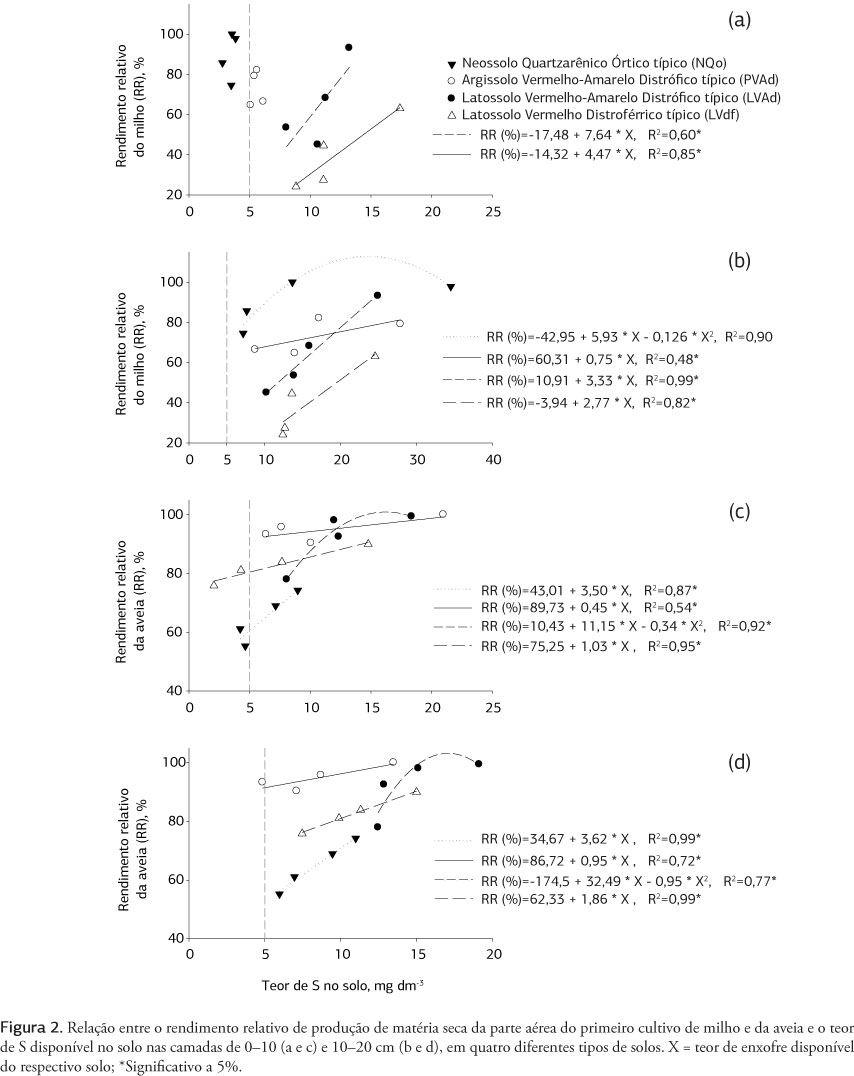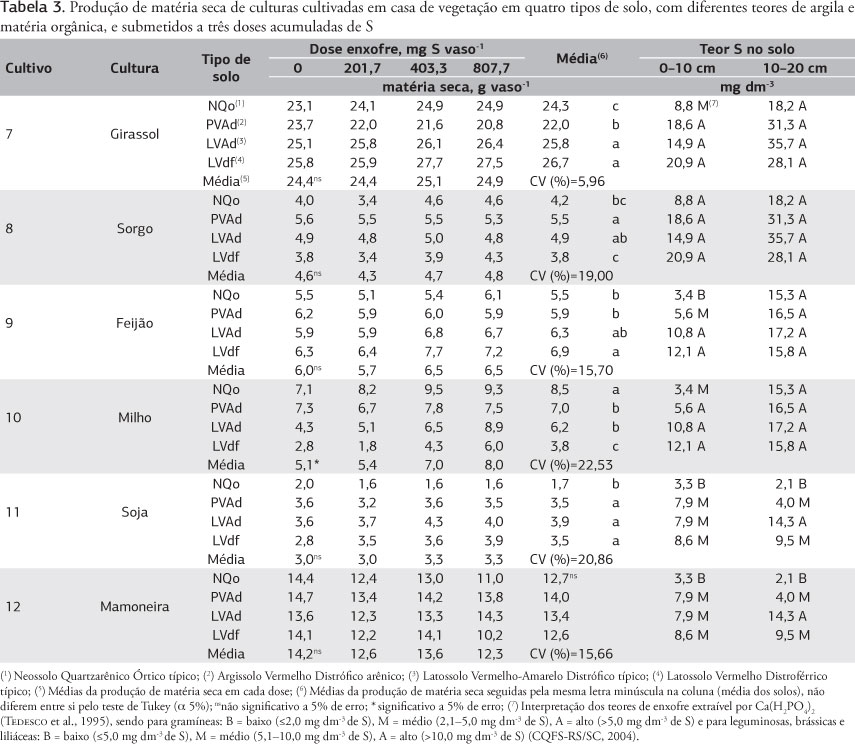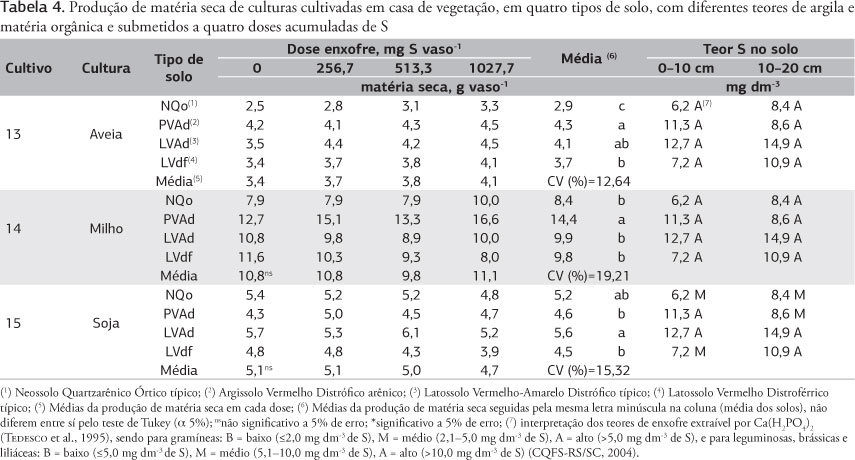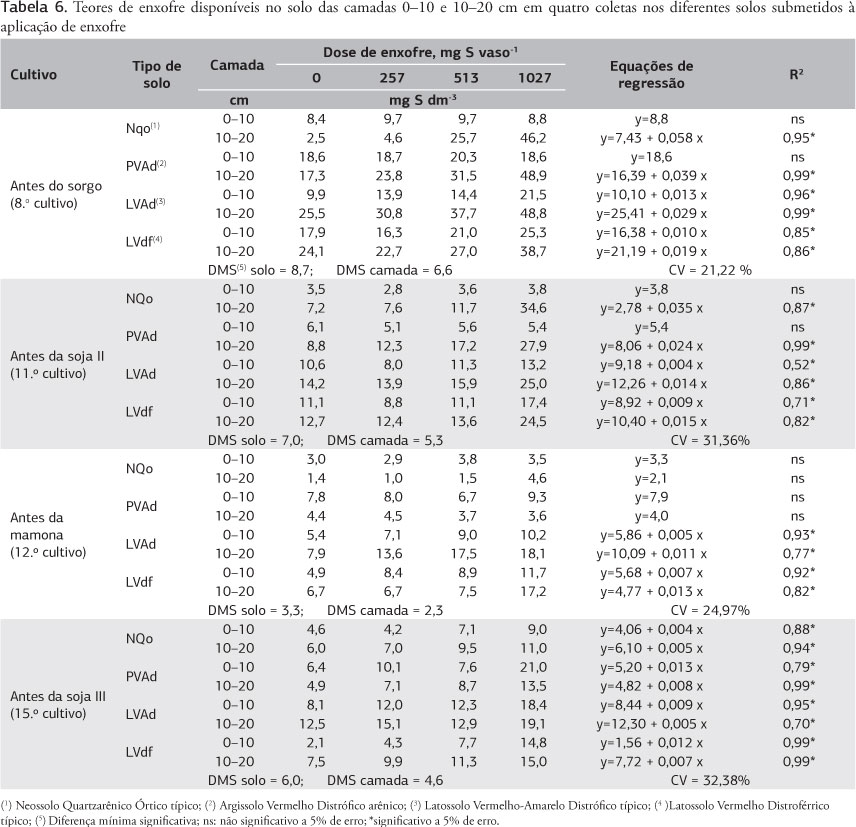Soils with low levels of clay and organic matter frequently had shown low sulfur (S) availability. Therefore, increases in crop yields trough sulfated fertilizations are expected. The objective of this work was to evaluate the response of crops and the S availability in soils with different contents of clay and organic matter submitted to sulfated fertilization. The experiment was carried out in pots in a greenhouse during the period from August 2004 to January 2008. Nine successive crops were cultivated in four classes of soils submitted to the application of four S levels. Dry matter yield and S accumulation in the shoot were evaluated. Soil samples from the soil layers of 0 - 10 cm and 10 - 20 cm were collected to quantify the available S content. Only the first cultivation of corn and black-oat increased the shoot dry matter yields due to sulfated fertilization. Besides, there was no relation between corn yield increases and the levels of available S from the soil layer of 0 - 10 cm in sandy soils. Even when the available S content in the soil layer of 0-10 cm was lower than the critical levels, no sulfate fertilization responses were observed when sunflower, bean, soybean and castor bean were cultivated. The amount of S accumulated in the shoots and the level of available S increased due to S fertilization. A large amount of sulfate also migrated to the soil layer of 10 - 20 cm, especially in sandy soils, and therefore, the diagnosis of S availability should be made in the subsurface soil layers.
dry matter; sulfur accumulation; sulfur sufficiency level; sulfate percolation








